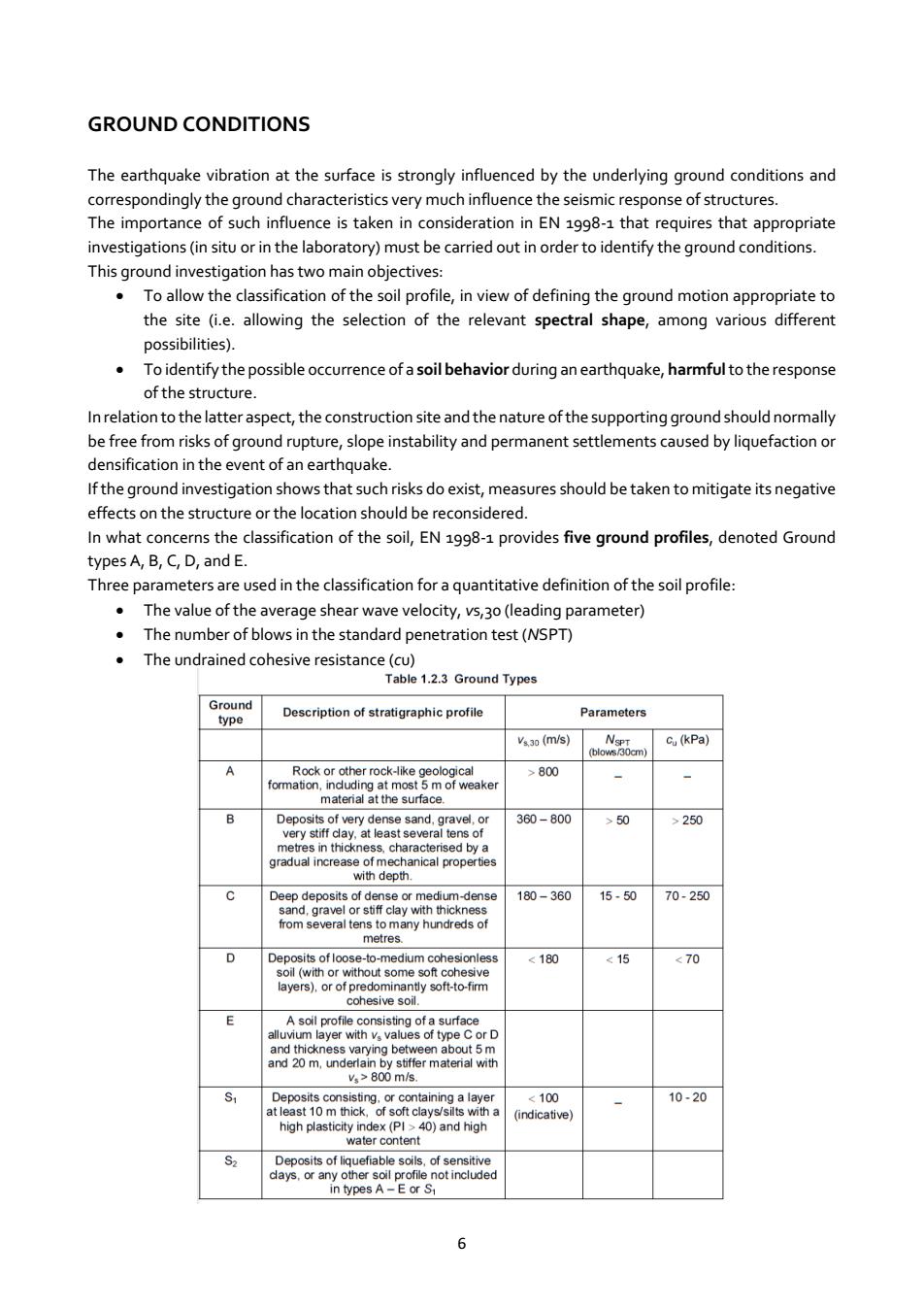正在加载图片...

GROUND CONDITIONS The earthquake vibration at the surface is strongly influenced by the underlying ground conditions and correspondingly the ground characteristics very much influence the seismic response of structures. The importance of such influence is taken in consideration in EN 1998-1 that requires that appropriate investigations(insitu or in the laboratory)must be carried out in order to identify the ground conditions. This gro Toallow the classification of the soil profile,in view of defining the ground motion appropriate to the site (i.e.allowing the selection of the relevant spectral shape,among various different possibilities). Toidentify the possible occurrence ofasoil behavior during an earthquake,harmfulto the response of the structure Inrelation to the latter aspect,the construction site and the nature of the supporting ground should normally be free from risks of ground rupture,slope instability and permanent settlements caused by liquefaction or densification in the event of an earthquake. If the ground investigation shows that such risks do exist,measures should be taken to mitigate its negative effects on the structure or the location should be reconsidered. In what conc the classification of the soil,EN998-provides five ground profiles,denoted Ground Three parameters are used in the classification for a quantitative definition of the soil profile The value of the average shear wave velocity,vs,3o(leading parameter) The number of blows in the standard penetration test(NSPT) The undrained cohesive resistance(cu) able 1.2.3 Ground Types Description of stratigraphic profile Parameters (m/s)m ckPa】 A Rock or other >800 360-800 >50 >250 180-360 15-50 70-250 D 180 <15 se 10-20 y m conten 66 GROUND CONDITIONS The earthquake vibration at the surface is strongly influenced by the underlying ground conditions and correspondingly the ground characteristics very much influence the seismic response of structures. The importance of such influence is taken in consideration in EN 1998-1 that requires that appropriate investigations (in situ or in the laboratory) must be carried out in order to identify the ground conditions. This ground investigation has two main objectives: To allow the classification of the soil profile, in view of defining the ground motion appropriate to the site (i.e. allowing the selection of the relevant spectral shape, among various different possibilities). To identify the possible occurrence of a soil behavior during an earthquake, harmfulto the response of the structure. In relation to the latter aspect, the construction site and the nature of the supporting ground should normally be free from risks of ground rupture, slope instability and permanent settlements caused by liquefaction or densification in the event of an earthquake. If the ground investigation shows that such risks do exist, measures should be taken to mitigate its negative effects on the structure or the location should be reconsidered. In what concerns the classification of the soil, EN 1998-1 provides five ground profiles, denoted Ground types A, B, C, D, and E. Three parameters are used in the classification for a quantitative definition of the soil profile: The value of the average shear wave velocity, vs,30 (leading parameter) The number of blows in the standard penetration test (NSPT) The undrained cohesive resistance (cu)